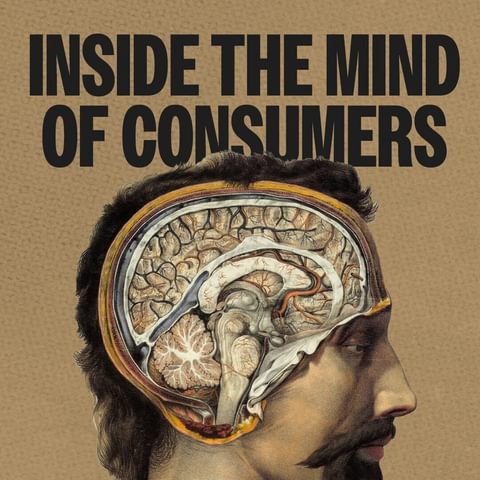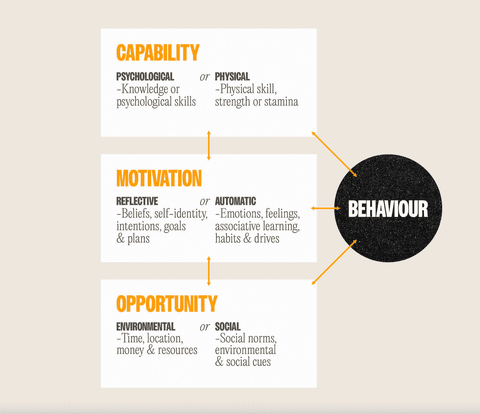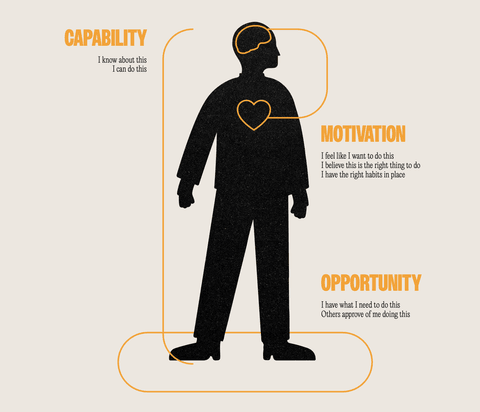NEWS ALERT - We won a SILVER IPM award for Best use of Social Media, 2025! Read more🏆

What’s going on inside consumers' heads? Wouldn’t it be amazing to read minds and understand what makes your target audience tick?
Understanding the customer decision-making process is crucial for brands. There are certain steps in a decision cycle, each of which needs consideration around how you will make sure your brand or product comes out on top. Before marketing your business, you need to understand and identify the different steps in customer decision-making.
In this blog, we’re going to take you through each step and how to make sure the customer chooses you.
Understanding the psychological side of consumers will help improve your marketing efforts. Not only will you be able to make attractive campaigns, but you’ll be able to add in factors that trigger consumers to enjoy it, and importantly, disrupt their traditional patterns. One great model that we always love talking about when understanding human behaviour is the COM-B model which looks into 3 main points that work in interrupting behaviour;
Capability - The psychological and physical ability to participate in an activity.
Opportunity - External factors that make a behaviour possible.
Motivation - Cognitive process that directs and inspires behaviour.
Understanding these three factors will help you to identify ways to help a consumer make a decision. There are 5 different steps that a human takes before making a decision on a brand. At Together, we focus on behavioural insights in order to make our work as compelling as possible. We even have a behavioural psychology expert as part of our team to lead on these insights! Check out this blog to learn more about him.

Read on to find out how you can create the most effective marketing campaign possible...
This is the understanding that when customers go to buy something, there is usually a problem to be solved or a need for the product. When a customer considers buying your product or service there is a reason behind it, you need to recognise what that could be. For example, if you’re a company that offers luxury alcohol, your consumers may be people who are planning to host an event, so you would need to consider their circumstantial thought process. If they’re hosting a birthday party, cocktails and champagne are a great option to market, if it is a work Christmas party, then marketing wines and non-alcoholic options is the more suitable option. The objectives between a successful birthday event & a successful work Christmas party are very similar, but the route a consumer will take to achieve them is markedly different. Make sure you understand ‘why’ your consumers need this product to match their objectives with your brand.
This stage is absolutely critical for your success. By this point, the consumer has identified your brand/product as an option, but will (often subconsciously) start comparing it against your competitors. Quality, price, brand presence, and a whole lot more goes into this comparative decision. Ultimately, the decision revolves around their assessment of whether your product is “worth it”?
Appearing as ‘the’ best option vs. your competitors is a long and strategic endeavour, which we’ll have to go into more detail on in another article. For now though, our common piece of advice is to start by considering the ‘convenience’ of your product for the consumer. Is your brand/product ‘easy’ to get started with? Is the way you’re positioning your offering clear & concise? If you think you might have ‘work-ons’ here, starting by maximising convenience for your target customer is the best place to start.
Steps 2 and 3 come hand in hand with the customer decision-making process. This is the step where customers will choose which product they determine to be the most beneficial. If you did your research, found your competitors, and made sure you better serve your audience's wants and needs, your offering should feature in this decision.
This is also the step where your USP will come into play; if it is strong and engaging, your offering should be easily memorable, thus helping consumers to consider your product as one of the stronger options.
Consumers usually divide their options into three main categories;
1. Evoked Set - The products they may consider buying.
2. Inert Set - These products have little to no impact on the buyer.
3. Inept set- A category that the buyer will not consider buying at all.
In our experience, one of the most reliable ways to move your offering from ‘Inert’ to ‘Evoked’ is through social proof. Reviews, testimonials and UGC are excellent trust signals to encourage prospective buyers to choose your product.
Building an impressive number of high-quality reviews takes time, and there are many ways to activate your previous customers to help you grow this asset. Again, this is a topic for another day, but in the meantime, ensuring you have a compelling & active social media presence is a great place to start. As we said earlier; make your business as easy/convenient as possible for your target customer to engage with.
After evaluating each product and putting them into the set categories, the buyer needs to now make the final decision. The buyer will likely only be choosing from their ‘Evoked Set’ by this step as they’ll be choosing the product that appears to benefit them the most. Your goal is to make sure your product is the one the buyer will choose (tips on how to do just that later in this piece!)
Even after purchasing, your customer’s evaluation hasn't finished. This is the time the customer will really be able to make a final opinion on the product and brand. Does it meet their standards? Was it worth the money? Does it match the marketing? Will they recommend it to other people? Does the brand align with them? For a business, this step is where your real, long-term growth potential is realised.
If your product has met customer requirements & objectives, you’re in a great position to request they leave a positive review & consider purchasing from you again in the future.
If your product hasn’t met expectations, you can find yourself in a tricky situation as you might be open to criticism and have little chance of repeat custom. In this case, acting quickly and empathetically is critical; if the complaint is about something you can fix, then do so. The worst case scenario is that other prospective customers will see you acting to try and resolve the negative customer experience, thus building trust and salvaging your credibility.

So, we’ve just outlined the consumer decision-making process, but how do you make sure your brand has compelling, timely and well-managed touchpoints throughout?
Now you know how customers make their decisions, you want to make sure your product is their final choice or at least, a top one that they may come consider in the future. There are multiple steps to ensure your customers choose your brand and engage with it, read on to find out more:
First and foremost, this is a marathon, not a sprint! For instance, studies show that 60% of customers will remain cautious for up to four touch points before finally looking to trust your brand. Now, we’re not saying to spam them with your offering, but just because consumers might appear reluctant, doesn’t mean they’re not willing to give your product a chance. When you’re pitching to a new consumer, you’re competing against all of their historic experiences, expectations and objectives - all of which are totally unique to that individual and can be difficult to understand, let alone disrupt.
Before you can hope to disrupt and centre your brand, you have to research, research, and research. You can never have too much information on your prospective buyers. You need to understand your audience, their wants and needs, and where you best add value.
Creating detailed customer personas, engaging with them, and finding where your audience is located and what their decision-making timeline looks like is key. You need to know where your audience is to be able to communicate with them effectively. Communicating with your key customer personas involves everything from brand voice and content to the placement of your messaging.
Next, make your campaigns strong; your tone, style and channels need to reach your intended audience on a meaningful level. Humanising your brand will build a personality that matches your ideal consumers. Creating relationships with your customers, and helping them feel like they relate to your brand is how you can build loyalty. If you’re stuck on how to get started or want help optimising your campaigns, we’re here to help, check out our blog all about how to humanise your brand.
Understanding and supporting your customers’ decisions is a priceless grounding for every business. Following all these steps may sound easy, but we know how much goes into getting it right.
__________
When it comes to building your brand you need to be able to identify all the factors that will contribute to its success. We love digging deeper into consumers' minds here at Together, which is why we’re proud of our team which includes human behaviour experts, creative geniuses and strategic thinkers to craft campaigns that we are proud of and deliver real results.
Working on a project? Looking for some help? Get in touch with us today!